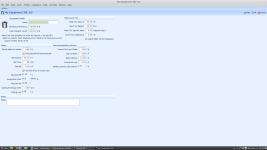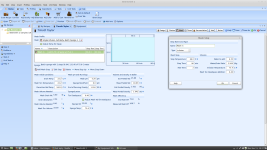Hi to all forum members.
I am currently playing around with Beersmith2 with the trial version, before downloading the key. I am new to all grain brewing and just want to make sure that I am in the ball park for settings of the system. I have a 50L S/S vessel but at this stage want to experiment with smaller batches ie 11.5 L, to allow me to build up experience in the whole new world of brewing.
I would like some advice whether I have set the equipment profile correctly for my system, I am using a 33L coolbox for a mashtun.
Can somebody explain why I have 11.5L showing in the "batchsize" and 18.93L in the "measured batch size". What is the difference here.
I have also taken a stab at some of the efficiencies for my first brew. First impressions from the software is that it is reasonably complex for a beginner like me, but I can see the value of really getting to understand the process and the software.
I am sure there will be many more silly questions from me!
Best regards,
WM7793

I am currently playing around with Beersmith2 with the trial version, before downloading the key. I am new to all grain brewing and just want to make sure that I am in the ball park for settings of the system. I have a 50L S/S vessel but at this stage want to experiment with smaller batches ie 11.5 L, to allow me to build up experience in the whole new world of brewing.
I would like some advice whether I have set the equipment profile correctly for my system, I am using a 33L coolbox for a mashtun.
Can somebody explain why I have 11.5L showing in the "batchsize" and 18.93L in the "measured batch size". What is the difference here.
I have also taken a stab at some of the efficiencies for my first brew. First impressions from the software is that it is reasonably complex for a beginner like me, but I can see the value of really getting to understand the process and the software.
I am sure there will be many more silly questions from me!
Best regards,
WM7793



